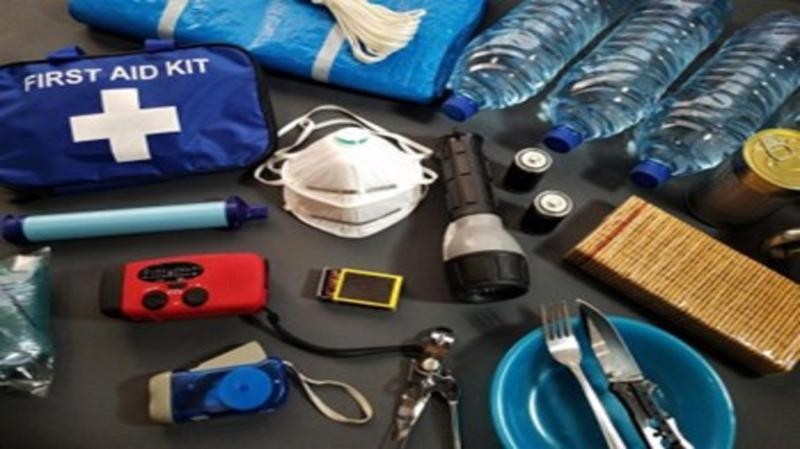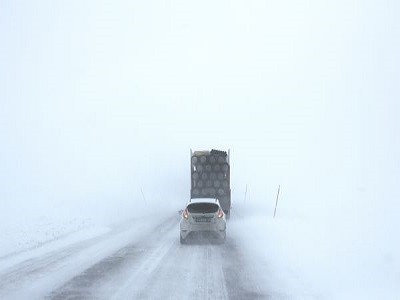Winter in Buffalo, NY, is renowned for its heavy snowfall and challenging weather conditions. These conditions often lead to travel advisories and, in severe cases, travel bans. Understanding how to navigate these winter storms and travel restrictions is crucial for residents and visitors alike. This guide provides essential information on staying safe during Buffalo’s winter storms, especially when travel bans are in effect.
Understanding Buffalo NY Travel Bans
A travel ban in Buffalo, NY, is a serious measure implemented by local authorities during severe winter weather events. It means that non-essential travel is prohibited within a specified area. The primary goal of a travel ban is to keep roads clear for emergency vehicles and prevent accidents during hazardous conditions like blizzards or heavy snowfall.
Ignoring a travel ban can lead to significant consequences, including fines and potential danger to yourself and emergency responders. It’s essential to understand the severity of these bans and to stay informed through official channels.
Staying Safe at Home During a Winter Storm
When a travel ban is issued or a severe winter storm is predicted, the safest place to be is indoors. Here’s how to ensure your safety and comfort at home:
- Find Shelter Immediately: If you are not already home, seek shelter as quickly as possible. If you need a warming center, call 2-1-1 to find the nearest location.
- Stay Off the Roads: Adhere strictly to travel bans. Driving is extremely dangerous during severe winter storms, and it hinders emergency services.
- Maintain Clear Vents: Ensure exterior exhaust and furnace vents are clear of snow and ice to prevent carbon monoxide build-up.
- Stay Indoors and Dress Warmly: Stay inside and wear layers of warm clothing. Even indoors, temperatures can drop significantly during power outages.
- Bring Pets Inside: Pets are also vulnerable to the cold. Bring them indoors to protect them from the elements.
- Stay Informed: Monitor emergency information and alerts through radio, TV, and official apps.
- Locate Utilities: Know the location of electrical boxes and water shut-offs in your home in case of emergencies.
- Prepare for Power Outages: Winter storms can cause power outages. Have备用电池, flashlights, and non-perishable food ready.
- Use Generators Safely: If using a generator, operate it outdoors only and away from windows and doors to prevent carbon monoxide poisoning.
- Recognize Hypothermia and Frostbite: Be aware of the signs of hypothermia and frostbite and seek immediate medical attention if symptoms arise. Learn more about hypothermia and frostbite from the CDC.
- Check on Neighbors: Especially check on elderly neighbors or those with disabilities who may need assistance.
Planning and Preparation for Buffalo Winters
Being prepared is key to staying safe during Buffalo’s harsh winters. Develop a comprehensive plan and assemble emergency kits for your home and car.
Make an Emergency Plan
Preparation starts with a solid emergency plan. Ready.gov offers resources to help you create a plan that includes:
- Emergency Alerts and Warnings: How will you receive alerts? Consider downloading the Ready Erie App and signing up for the City of Buffalo BUFFALERT System for real-time updates.
- Evacuation Plan: While less common in winter storms, know your evacuation routes in case of other emergencies.
- Communication Plan: How will you contact family and friends if phone lines are down?
- Emergency Kit Updates: Regularly check and update your emergency kits for home and car.
Build a Home Emergency Kit
An emergency kit at home is essential. Ready.gov provides a detailed checklist for home kits, which should include:
- Food and Water: Stock non-perishable food and plenty of water. Consider building a food pantry and explore resources like the Emergency Eats Cookbook.
- Medications and First Aid: Ensure you have a supply of necessary medications and a well-stocked first aid kit.
- Warm Clothing: Have extra blankets, warm clothes, hats, and gloves readily available.
- Communication and Power: Include a portable radio, flashlights, and extra batteries for communication and light during power outages.
- Neighbor Contacts: Exchange contact information with neighbors to check on each other during emergencies.
 Emergency home kit
Emergency home kit
Build a Car Emergency Kit
If you must travel, especially before or after a potential travel ban, ensure your car is equipped with an emergency kit. Ready.gov offers guidelines for car emergency kits. Key items include:
- Car Maintenance: Keep your gas tank full and ensure your tires have good tread for winter conditions.
- Jumper Cables: Know how to use jumper cables in case your car battery dies in the cold.
- Avoid Floodwaters: Never drive through flooded areas.
- Safety in Contact with Power Lines: If a power line falls on your car, stay inside until professional help arrives.
- Essential Car Kit Items: Include blankets, warm clothing, a flashlight, food, water, a first-aid kit, and sand or kitty litter for traction.
 Emergency car kit
Emergency car kit
Health Risks During Winter Storms
Extreme winter cold poses significant health risks. It’s crucial to be aware of these risks and take preventative measures. If you experience symptoms of any of these conditions, seek immediate medical help by calling 911.
Carbon Monoxide Poisoning
Carbon monoxide (CO) is a silent killer – odorless and colorless. It’s produced by burning fuel and can build up indoors if ventilation is poor.
- CO Poisoning Symptoms: Symptoms are often flu-like and include headache, dizziness, weakness, upset stomach, vomiting, chest pain, and confusion. Prolonged exposure can lead to passing out or death.
- Prevention: Install carbon monoxide detectors in your home, especially near sleeping areas. Never use generators, grills, or fuel-burning appliances indoors.
Hypothermia and Frostbite
Exposure to cold temperatures can lead to hypothermia (dangerously low body temperature) and frostbite (damage to body tissues due to freezing).
- Hypothermia Symptoms: Shivering, exhaustion, confusion, slurred speech, and drowsiness.
- Frostbite Symptoms: Numbness, pale or waxy skin, and hardened skin. Frostbite commonly affects fingers, toes, ears, and nose.
- Prevention: Dress in layers, cover exposed skin when outdoors, and stay dry. Seek warm shelter if you experience signs of hypothermia or frostbite.
Resources for Staying Informed in Buffalo
Stay updated with the latest information from reliable sources:
- Ready Erie App: Download the Ready Erie App for notifications, shelter locations, and emergency plans.
- City of Buffalo BUFFALERT System: Sign up for BUFFALERT for emergency alerts specific to Buffalo.
- Local Media: Listen to commercial radio and television stations for weather updates and emergency broadcasts.
- Winter Preparedness Survey: Review the Winter Preparedness in the City of Buffalo: 2024 Survey Results & Findings for insights into local preparedness and challenges.
Protecting Vulnerable Groups
Winter storms pose greater risks to certain populations:
-
Seniors: May have reduced ability to regulate body temperature and may be more isolated.
-
Pets: Susceptible to cold and need indoor shelter. [Consult your veterinarian for pet-specific winter safety tips.](your-veterinarian-link-here – Placeholder, replace with a relevant link)
-
Homeless Individuals: Extremely vulnerable to the cold and require access to warming shelters.
-
People with Disabilities and Special Needs: May need additional assistance and support during winter storms.
-
Individuals with Chronic Diseases: Conditions like asthma, diabetes, heart conditions, and kidney disease can be exacerbated by cold weather.
Conclusion
Buffalo, NY, winters demand respect and preparation. Understanding travel bans, preparing your home and car, and being aware of health risks are vital for safety. By staying informed, planning ahead, and taking necessary precautions, you can navigate Buffalo’s winter storms and travel bans safely. Always prioritize safety and heed the warnings of local authorities during severe weather events.